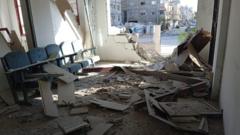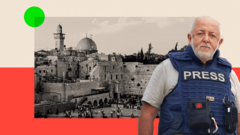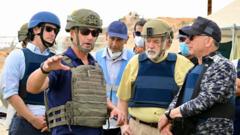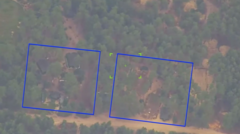The first wave of Israeli attacks on Iran's nuclear sites resulted in the deaths of several high-ranking officials, yet key nuclear materials remain unharmed, indicating that conflict dynamics continues to evolve.
**Israel's Strikes Disrupt Iran's Nuclear Program, Yet Key Resources Remain Intact**

**Israel's Strikes Disrupt Iran's Nuclear Program, Yet Key Resources Remain Intact**
Israeli military assaults have inflicted significant damage on Iran's nuclear capabilities but failed to target crucial fuel stockpiles.
June 13, 2025, 2:45 p.m. ET — In an escalation of regional tensions, Israeli military operations have targeted Iran's nuclear facilities, dealing substantial blows by destroying core command centers and eliminating key military and scientific personnel involved in the country's nuclear ambitions. While the repercussions of these strikes are profound, the critical components of Iran's nuclear program appear to be largely untouched, marking a complex scenario for ongoing international policy and security discussions.
The assaults, which commenced early on Friday, saw Israeli forces successfully strike the Natanz uranium enrichment center, crippling its operational capabilities. This facility has been a focal point in Iran’s nuclear development and is central to the centrifuge activities necessary for enriching uranium. The attacks also lead to the deaths of significant Iranian figures, continuing Israel's historical pattern of targeting identifiable experts within Iran's nuclear endeavor.
Nevertheless, the initial attacks notably omitted one of Iran’s most critical areas: the vast complex in Isfahan, where much of Iran's near-bomb-grade nuclear fuel is reportedly stored. International inspectors, including those from the International Atomic Energy Agency (IAEA), have confirmed the presence of this sensitive material during recent assessments. Despite the initial success of the Israeli strikes, the operational choice to bypass Isfahan raises questions about future military strategy and deterrence.
In a subsequent statement, the Israel Defense Forces clarified that while the facility at Isfahan was subjected to additional bombardments, these strikes focused on laboratories essential for converting uranium gas into metal—a pivotal step before weapon assembly; however, the fuel stockpile remained unharmed. Rafael Mariano Grossi of the IAEA expressed concern over the unexplained gap in targeting, highlighting the strategic implications for Iran's continuing ability to develop capabilities unhindered.
This restraint warrants scrutiny, especially since Prime Minister Benjamin Netanyahu had historically justified aggressive military action precisely to hinder Iran's path to nuclear capability. As the international community assesses the fallout from these recent developments, the situation remains fluid, with significant implications for geopolitical stability in the Middle East and global nuclear non-proliferation efforts.
The assaults, which commenced early on Friday, saw Israeli forces successfully strike the Natanz uranium enrichment center, crippling its operational capabilities. This facility has been a focal point in Iran’s nuclear development and is central to the centrifuge activities necessary for enriching uranium. The attacks also lead to the deaths of significant Iranian figures, continuing Israel's historical pattern of targeting identifiable experts within Iran's nuclear endeavor.
Nevertheless, the initial attacks notably omitted one of Iran’s most critical areas: the vast complex in Isfahan, where much of Iran's near-bomb-grade nuclear fuel is reportedly stored. International inspectors, including those from the International Atomic Energy Agency (IAEA), have confirmed the presence of this sensitive material during recent assessments. Despite the initial success of the Israeli strikes, the operational choice to bypass Isfahan raises questions about future military strategy and deterrence.
In a subsequent statement, the Israel Defense Forces clarified that while the facility at Isfahan was subjected to additional bombardments, these strikes focused on laboratories essential for converting uranium gas into metal—a pivotal step before weapon assembly; however, the fuel stockpile remained unharmed. Rafael Mariano Grossi of the IAEA expressed concern over the unexplained gap in targeting, highlighting the strategic implications for Iran's continuing ability to develop capabilities unhindered.
This restraint warrants scrutiny, especially since Prime Minister Benjamin Netanyahu had historically justified aggressive military action precisely to hinder Iran's path to nuclear capability. As the international community assesses the fallout from these recent developments, the situation remains fluid, with significant implications for geopolitical stability in the Middle East and global nuclear non-proliferation efforts.





















